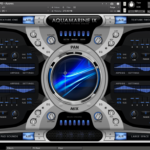MUZE
Review of Aquamarine by Muze
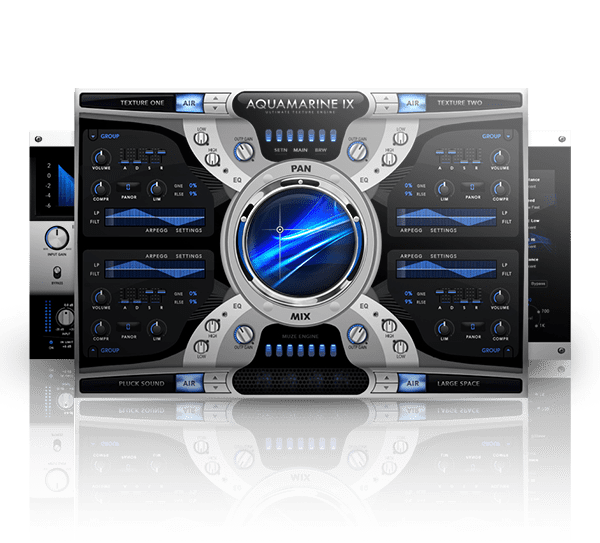
The library is ideal for movie soundtrack, electronic/ambient music, and video game creation. The sounds you can construct within and between each layer are virtually infinite.
So, you’ve been working on your tracks for a while now but feel like something’s missing. You’ve tried all sorts of sounds and instruments but can’t seem to find the right fit. Maybe it’s time to try something new – like fat analog synths and beautifully recorded pad instruments.
These kinds of instruments can add a richness and complexity to your tracks that you simply can’t get with other sounds. They can also take up a lot of space, however, which is why you need a library like Aquamarine by Muze.
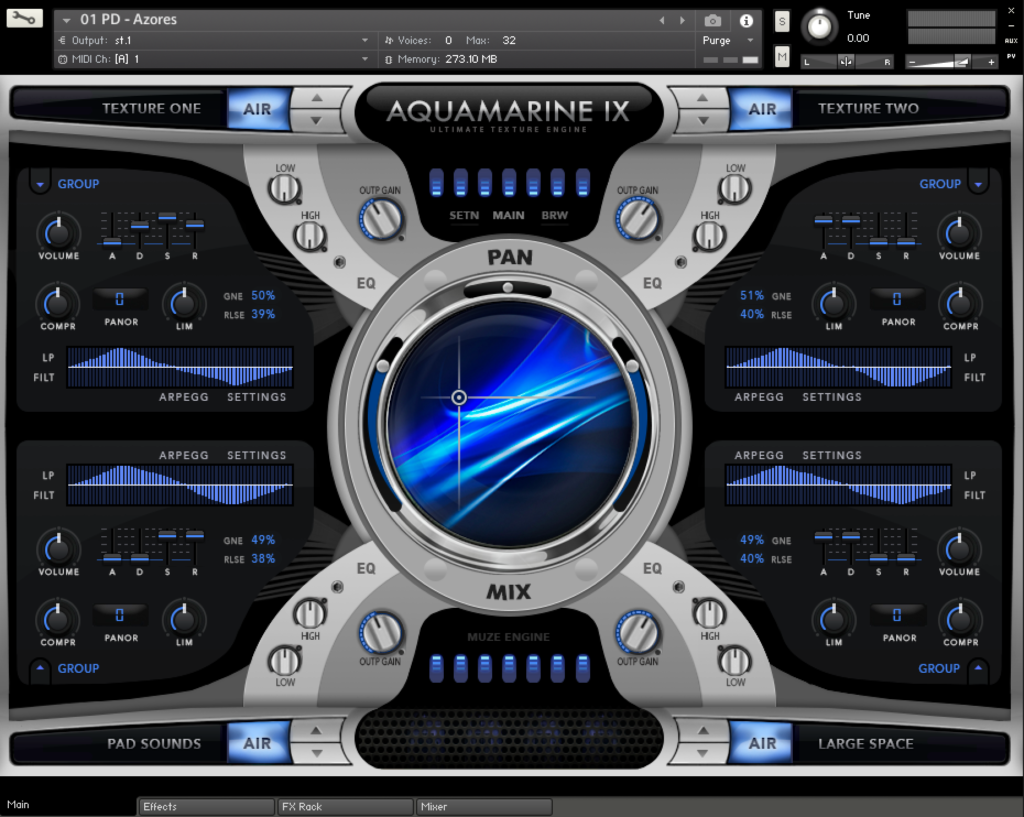
Review of Aquamarine by Muze
This massive 102 GB collection contains over 37,000 different synth samples, all ready to be used in your next track. Whether you’re looking for new chords, textures, or just some raw sound to work with, Aquamarine has you covered.
In addition to the sheer number of sounds, Aquamarine also comes with a quad-layer engine that lets you morph between different sounds. This gives you even more control over your tracks and opens up a world of possibilities.
Aquamarine by Muze
Experience the power of 102 GB of lossless compressed sound with MUZE AQUAMARINE COMPLETE. This library size provides you with 37108 samples, 30 built-in effects, and 2400 presets including textures, synths, plucks & chords. The flexible user interface lets you control all aspects of the sound and FX.
When you discover a Kontakt library with over 100 GB of samples, it’s natural to assume that it’s an orchestration software rather than a synth-based one. You’ll find more than 37,000 distinct synth samples in 16 separate .nki files.
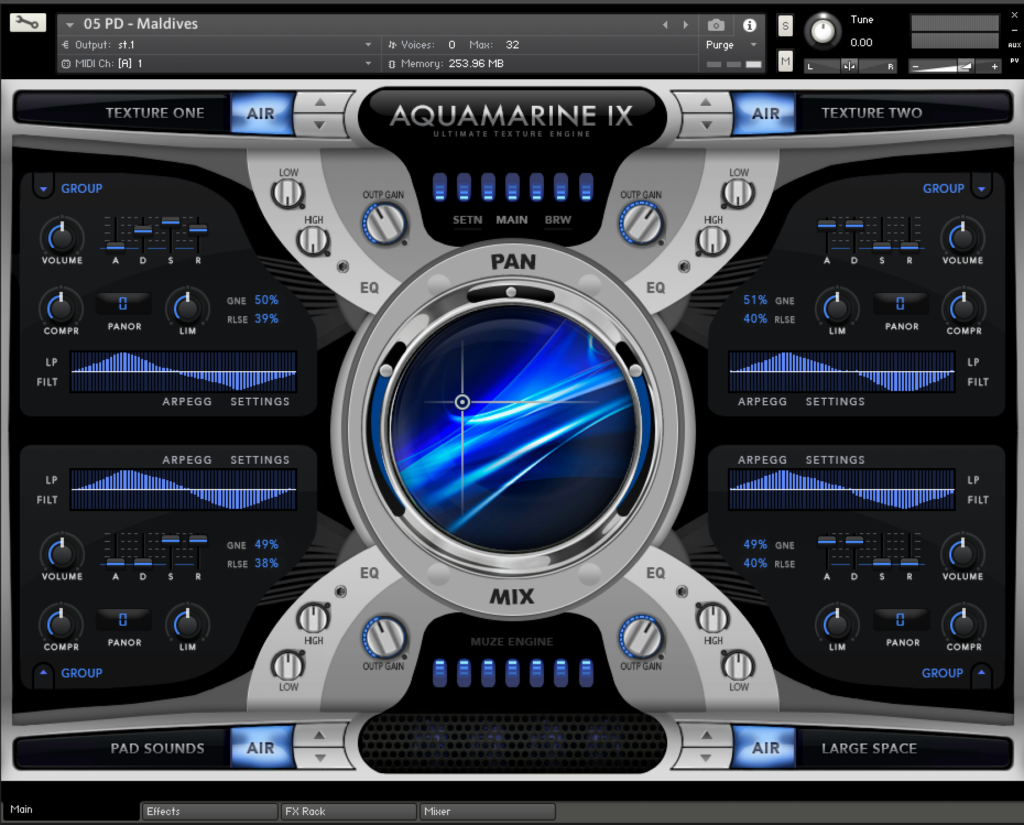
You also get a variety of FX and modulators to shape your sound with. Plucks, chords and textures are spread across the .nki files in a quad-layer engine that may be morphed via an XY pad.
Aquamarine is Muze’s first attempt at hybrid synthesis, and they didn’t hold back in what they’ve produced: a whopping 102 GB library that might be a sound designer’s fantasy. You’ll have access to a total of 2700 source sounds to explore, manipulate, combine, and invent your own.
Developing a 4-layer engine in Kontakt is nothing unusual, but the ability to combine an enormous number of high-quality sounds within each layer is truly unique.
You may begin with a pleasant ambient sound, but as you add more and more samples to each layer, you might wind up with a full-fledged orchestral madness.
Aquamarine CPU Load
How does one’s CPU handle being put to the test? I had a few times when I crammed as many as ten sounds into each layer, despite the fact that I didn’t really push the envelope by utilizing a big reverb or panorama, both of which are known to cause even the most powerful computers CPU stress.
Above is the main page which gets loaded when you launch one of the 16 .nki files. All 16 of these are named after an island or island chain. Whatever the significance, it is probably only known to the developer. Maybe places to visit on someone’s bucket list, who knows. Each of the snapshots within the .nki seem to have some similarity in overall sound, whether it is pluck dominated, chord dominated or texture dominated. Personally, I tended to gravitate more toward the textural snapshots as I found many of them complex yet lush in presentation.
Aquamarine Main UI
There are no menus to change the sounds on each layer, and there is no randomize option, which hopefully will be added in the future. To change the sounds or turn on the arpeggiator, go to the settings page by clicking on settings.
The interface is relatively basic, with each layer having its own envelope (ADSR), volume control, compressor, limiter, panner, low-pass filter, arpeggiator, gain, and release. Furthermore, each layer has its own EQ. Pan and volume are two global parameters (both on the XY mixer’s perimeter).
The XY mixer fulfills its purpose and is CC assignable. There’s a bit of empty real estate here, notably the flashing blue lights below the mix and above the pan. I’m not sure if they do anything other than looking good when pulsing.
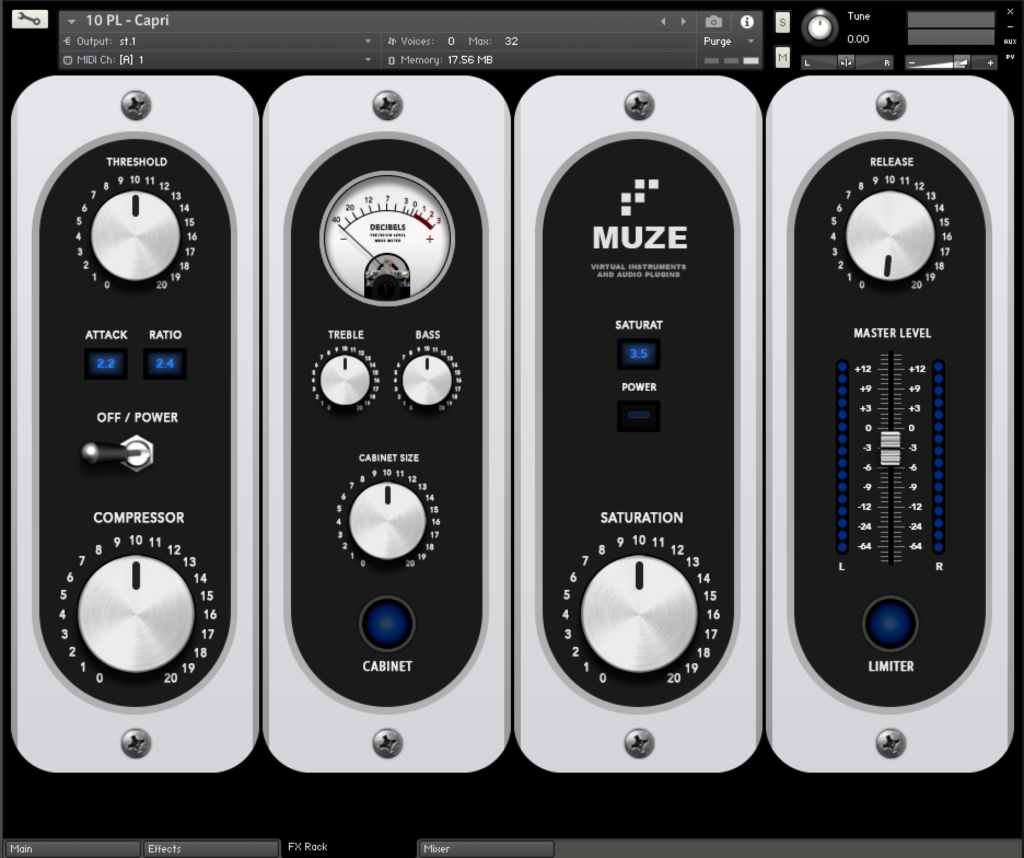
Aquamarine comes with a wide range of global FX to complement the individual layer FX. They’re split into separate tabs, and while they aren’t hard to manage on the go, they may be confusing when you’re looking at several at once.
Conclusion
This article has been a review of Aquamarine by Muze. We hope you’ve enjoyed reading it and have learned about the different aspects of this incredible Kontakt library.
CPU Load
How does one’s CPU handle being put to the test? I had a few times when I crammed as many as ten sounds into each layer, despite the fact that I didn’t really push the envelope by utilizing a big reverb or panorama, both of which are known to cause even the most powerful computers CPU stress.
Rating: Four Out of Five Stars
This library is perfect for film soundtrack, electronic/ambient music, and game development. It comes with over 37,000 distinct synth samples in 16 separate .nki files, as well as 30 built-in effects and 2400 presets.
The user interface is easy to use and lets you shape your sound with a variety of tools. The quad-layer engine is powerful and can create some truly unique sounds. Overall, this is an excellent library for anyone looking for high-quality synth samples.
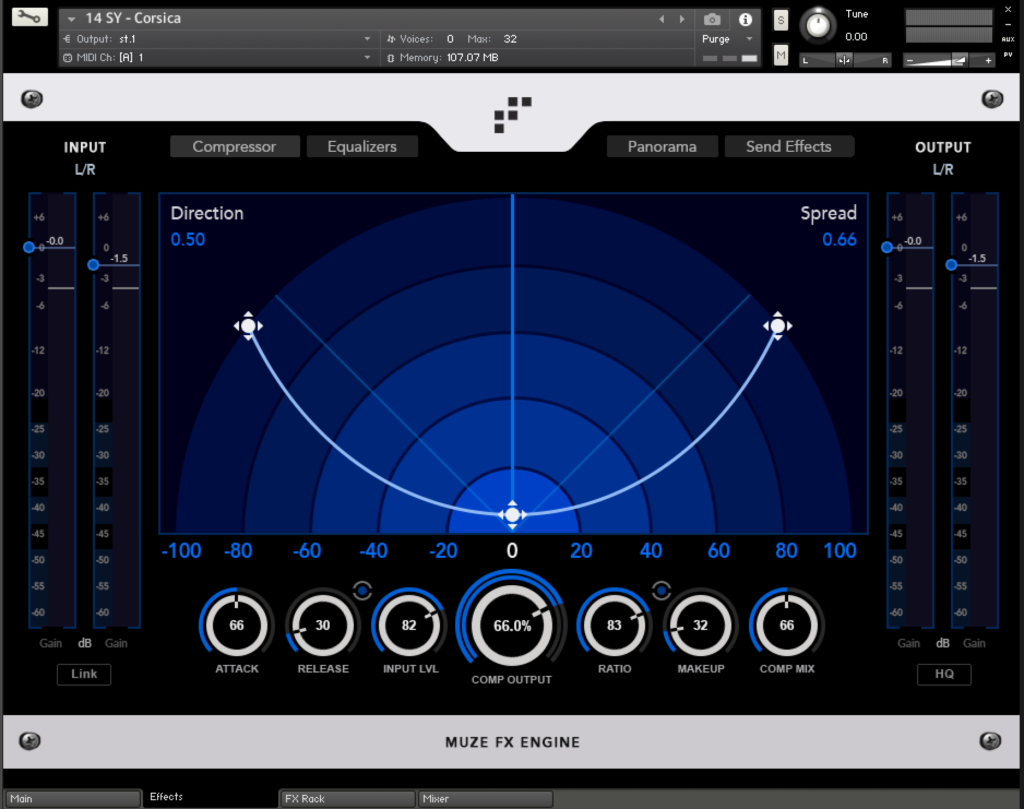
Aquamarine comes with a wide range of global FX to complement the individual layer FX. They’re split into separate tabs, and while they aren’t hard to manage on the go, they may be confusing when you’re looking at several at once.
This library is perfect for film soundtrack, electronic/ambient music, and game development. It comes with over 37,000 distinct synth samples in 16 separate .nki files, as well as 30 built-in effects and 2400 presets. The user interface is easy to use and lets you shape your sound with a variety of tools. The quad-layer engine is powerful and can create some truly unique sounds. Overall, this is an excellent library for anyone looking for high-quality synth samples.
Aquamarine comes with a wide range of global FX to complement the individual layer FX. They’re split into separate tabs, and while they aren’t hard to manage on the go, they may be confusing when you’re looking at several at once. However, this is still an excellent library for anyone looking for high-quality synth samples.
Aquamarine by Muze FAQ
What is the global FX in Aquamarine by Muze?
A: The global FX is located in the settings tab. There is a wide range of global FX to complement the individual layer FX. They’re split into separate tabs, and while they aren’t hard to manage on the go, they may be confusing when you’re looking at several at once.
How does one’s CPU handle being put to the test?
I had a few times when I crammed as many as ten sounds into each layer, despite the fact that I didn’t really push the envelope by utilizing a big reverb or panorama, both of which are known to cause even the most powerful computers CPU stress.
Is the Aquamarine by Muze library good for beginners?
This library is perfect for film soundtrack, electronic/ambient music, and game development. It comes with over 37,000 distinct synth samples in 16 separate .nki files, as well as 30 built-in effects and 2400 presets. The user interface is easy to use and lets you shape your sound with a variety of tools. The quad-layer engine is powerful and can create some truly unique sounds. Overall, this is an excellent library for anyone looking for high-quality synth samples.
Virtual Instrument Library
90% OFF AQUAMARINE – A New Way to Space by MUZE

AQUAMARINE COMPLETE by MUZE
Muze AQUAMARINE COMPLETE is a huge Inspiring collection of innovative new sounds and atmospheres, textures, pads & synths for music, sound design, and cinematic composition.

Developed for use with the full version of Kontakt 5.6 or higher, AQUAMARINE COMPLETE is an all-in-one tool for crafting soundtracks, cinematic music, epic music trailers – in fact, any music that requires powerful, inspirational, hybrid synth sounds.
- 37108 Samples (compressed).
- 102 GB size on disk.
- The full version of Kontakt 5.6 or above is required. Not compatible with Kontakt Player.
- A flexible user interface that allows you to control all aspects of the sound.
- Aquamarine is intuitive to use and an essential tool for any composer or sound designer.
- Contains more than 2400 patches (snapshots) divided into 4 categories: Pads, Chords, Synths, Plucks.
- There are a total of 2700 source sounds to explore, transform, combine, create your own.
- Aquamarine is the perfect sound library for styles such as Ambient, Chillout, Electronica, Film Production and many more styles of music.
- Built-in step sequencer setting for creating rhythmic pulses.
- Each preset has four layers (mixing with XY pad) with the ability to mix from 2 to 144 sounds simultaneously.

For just $19.99 (normally $199.99), get AQUAMARINE COMPLETE by MUZE!
All the samples included in this library are completely new and unique to this instrument.

Pricing and Availability
Originally $199.99, AQUAMARINE COMPLETE is available for only $19.99 ($180 in savings).

MUZE
MUZE AQUAMARINE COMPLETE SALE

MUZE AQUAMARINE COMPLETE SALE

Muze AQUAMARINE COMPLETE is a tremendous inspirational compilation of innovative new sounds and atmospheres, textures, pads & synths for music, sound design and cinematic composition.
Developed for use with the full version of Kontakt 5.6 or higher, AQUAMARINE COMPLETE is an all-in-one tool for crafting soundtracks, cinematic music, epic music trailers – in fact, any music that requires powerful, inspirational, hybrid synth sounds. NI Kontakt 5.6 Format And higher is required.
All the samples included in this library are completely new and unique to this instrument.
AQUAMARINE COMPLETE is an amazingly compelling tool with 2700 sound sources to choose from. The total download size is 102GB so please ensure you have enough space and a fast internet connection before you purchase.
AQUAMARINE COMPLETE Sources
- 4 Analog Synth Sources
- 2400 Deep Sampled Pad & Synth Patches
- 2700 Sounds to explore & combine

AQUAMARINE COMPLETE Features
- 102 GB (Lossless compression)
library size, 37108 samples - 30 Built-in Effects: Compressor,
Delays, Reverb, Limiter, Cabinet,
Gainer, Rotator, Stereo Panner,
Screamer, Distortion, Lo-Fi,
3 and 5-Band EQ & more - Full set of effects in the settings
for total customization - 2400 Presets: Textures, Synths,
Plucks & Chords - Powerful Layering Engine with
XY Pad Modulation - Sampled with Analog synthesizers
using digital equipment.
Availibility
Originally $199.99, AQUAMARINE COMPLETE is available for only $39.99 ($160 in savings) for a limited time.

-

 Vetted2 months ago
Vetted2 months ago11 Best Gore Websites to Explore the Darker Side of the Internet
-

 Music Theory2 weeks ago
Music Theory2 weeks agoUnlocking Nature’s Harmony: The Power of 432 Hz Frequency in Sound & Music for Enhanced Living and Well-Being
-

 Vetted1 month ago
Vetted1 month ago15 Best Commercial Vacuum Cleaners for Heavy-Duty Cleaning Jobs
-

 Vetted2 months ago
Vetted2 months ago15 Best Essential Oils Brands to Elevate Your Aromatherapy Experience
-
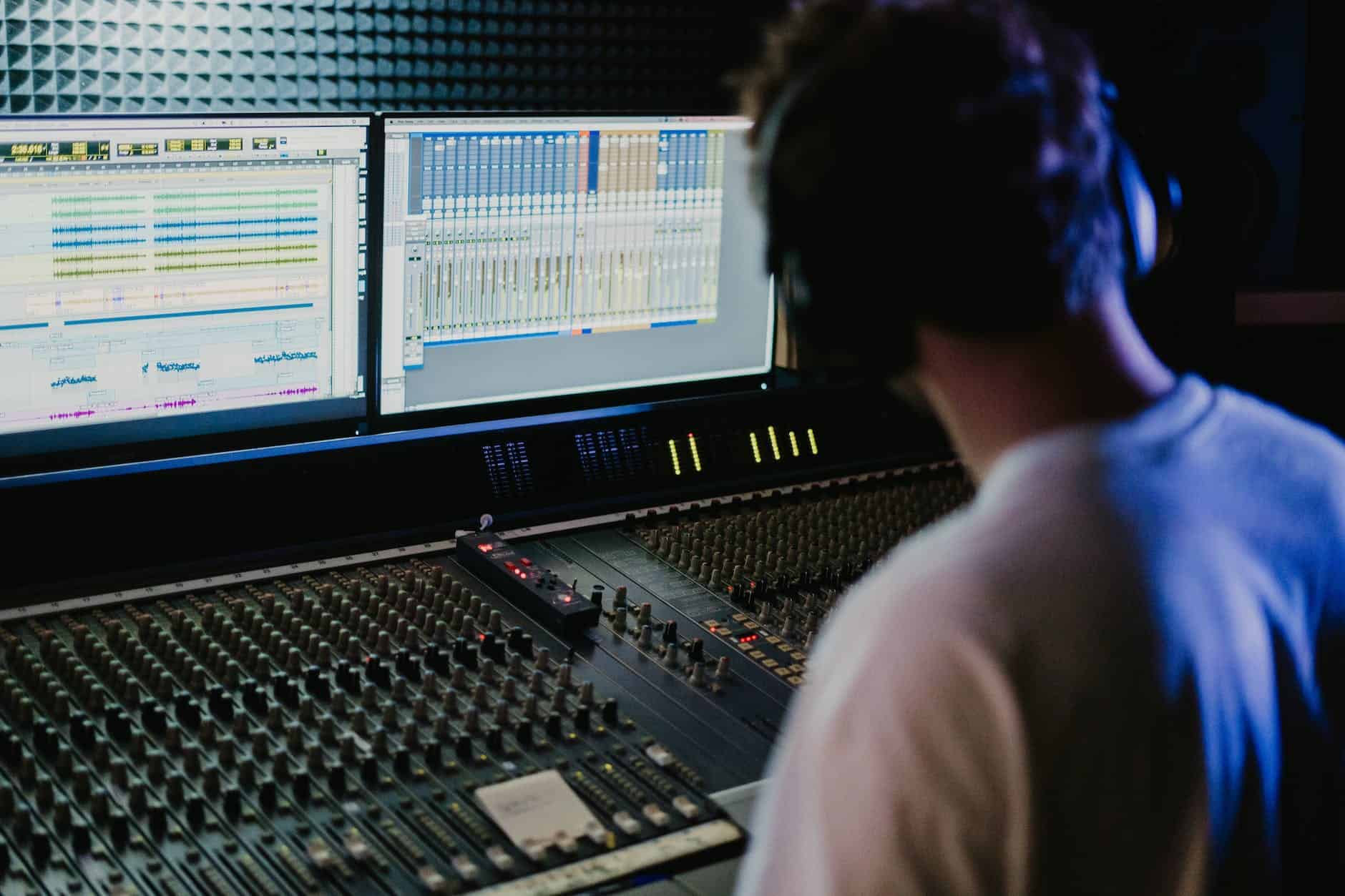
 Sound Design2 weeks ago
Sound Design2 weeks agoWhat Is the Difference Between a Sound Engineer and A Sound Designer?
-

 Native Instruments Kontakt2 weeks ago
Native Instruments Kontakt2 weeks agoVOCAL AI – Animated Intelligence: The Ultimate Vocal Playground
-
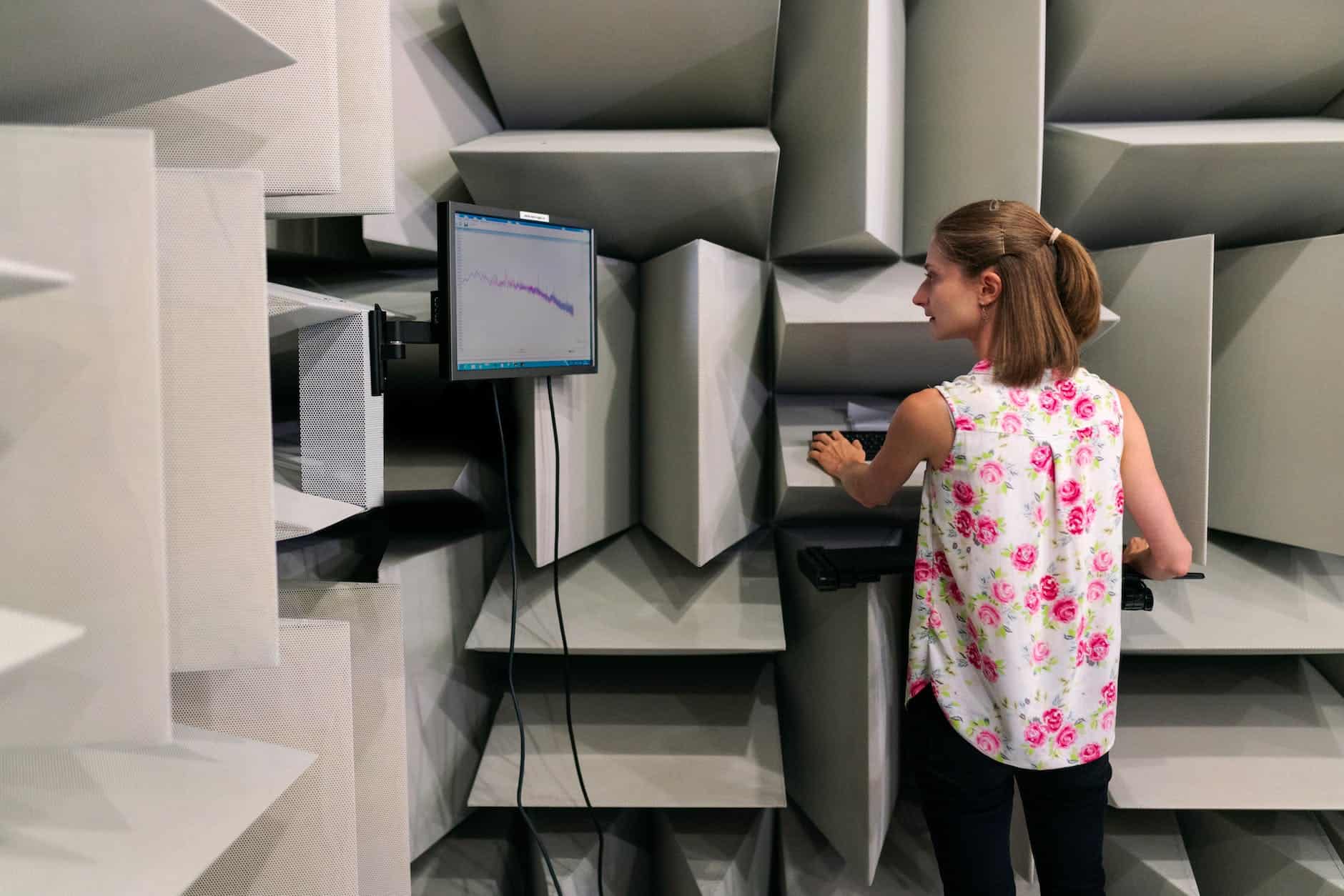
 Sound Design2 weeks ago
Sound Design2 weeks agoWhy Sound Engineer
-
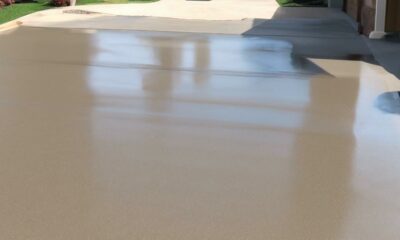
 Vetted2 months ago
Vetted2 months ago15 Best Concrete Sealers for Ultimate Protection and Longevity


